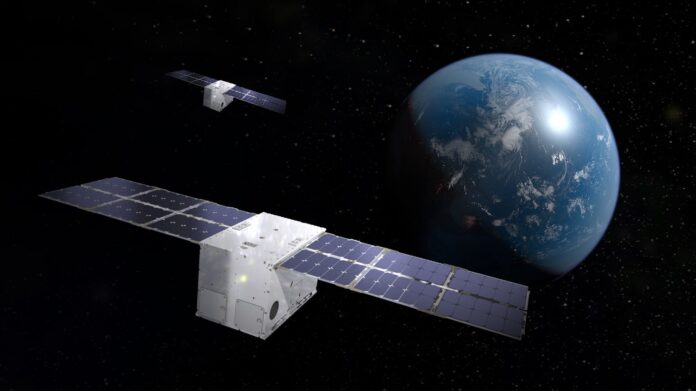Lockheed Martin’s In-space Upgrade Satellite System (LM LINUSS) has completed a successful on-orbit demonstration, proving how small satellites can serve an essential role in sustaining critical space architectures. These highly automated CubeSats can regularly upgrade existing constellations with new capabilities and extend spacecraft design lifecycles.
Developed using internal funding by Lockheed Martin, LM LINUSS is made up of two LM 50 12U CubeSats – each about the size of a four-slice toaster. While on-orbit, the system demonstrated highly automated rendezvous and proximity operations (RPO), which enables complicated yet precise maneuvering across multi-satellite constellations. This allows on-orbit servicing coordination and upgrades at scale in any orbit. The RPO demonstration was part of Lockheed Martin’s mission to validate essential maneuvering capabilities for future space upgrade and servicing missions.
In the recent demonstration, one of the LM LINUSS CubeSats acted as the designated servicing vehicle, navigating a flight path towards the second CubeSat, which represented the resident space object (RSO). As the servicing vehicle approached the RSO, onboard guidance algorithms made final real-time adjustments to complete its rendezvous operations. The culminating success was declared when the CubeSats maneuvered in proximity to one another and demonstrated high confidence in conducting future on-orbit servicing missions for customers.
Additionally, the satellites tested Lockheed Martin’s Horizon 2.0 command and control (C2) software and advanced RPO software; maintained connection with a secure cloud-based architecture for mission telemetry, tracking, and control; demonstrated miniaturized Space Domain Awareness capabilities. It also validated new onboard high-performance processing, low-toxicity propulsion, inertial measurement units, machine vision, and 3D-printed components.
“The LM LINUSS pathfinder is an excellent example of how Lockheed Martin is investing in innovation in the real world. Agile development, cloud-based operations, and smallsat platforms came together at speed and in orbit, where the real test of technology occurs,” said Johnathon Caldwell, Lockheed Martin, vice president and general manager, Military Space. “Through the accomplishments of LM LINUSS, Lockheed Martin is pioneering how future small and medium class missions will be upgraded on-orbit, and continuing to develop critical, breakthrough technologies that keep our customers ahead of ready.”
The company says LM LINUSScould be considered the most capable pair of CubeSats in geosynchronous Earth orbit today, based on customer community feedback. The spacecraft have higher bus density, payload accommodation, and on-orbit processing than any other CubeSat, which helps enable revolutionary mission capabilities in the future.
